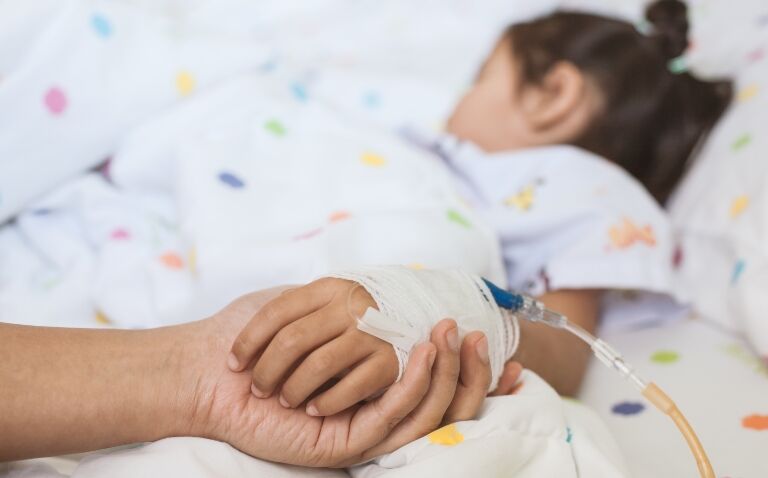A single, national standardised early warning system for paediatric teams in hospital settings is being rolled out by the NHS in England as a way of ensuring deterioration in a child’s condition is detected and escalated quickly.
Available from today (3 November), the new inpatient Paediatric Early Warning System (PEWS) chart allows paediatricians to measure things like blood pressure, heart rate, oxygen levels and levels of consciousness. The system tracks any changes and has different scores representing the level of concern.
If a parent or carer raises a concern that their child is getting ill or sicker than the score shows, this will immediately escalate the child’s care regardless of other clinical observations.
Unlike the similar universal system currently in place for adults, there are four separate charts for different age ranges, including 0-11 months, one to four years, five to 12 years, and those aged 13 and over.
The ultimate aim of the PEWS is to improve working methods and safety to support better health outcomes.
It is part of the System-wide Paediatric Observations Tracking (SPOT) programme, led by NHS England in collaboration and endorsement from the Royal College of Paediatrics and Child Health (RCPCH) and the Royal College of Nursing (RCN).
The partnership has been developing PEWS for three years, with pilots running across 15 sites demonstrating clear benefits for both patients and staff.
Updates to the system – such as those based on any guidance from Martha’s Rule, which gives families and patients the right to a second medical assessment – will continue to be implemented as required.
Professor Sir Stephen Powis, NHS national medical director, said: ‘We know that nobody can spot the signs of a child getting sicker better than their parents, which is why we have ensured that the concerns of families and carers are right at the heart of this new system with immediate escalation in a child’s care if they raise concerns and plans to incorporate the right to a second opinion as the system develops further.’
The NHS will develop and circulate a leaflet and video content for parents to explain how to communicate concerns to healthcare staff and encourage them to escalate if needed.
Dr Mike Mckean, vice president for policy, at the RCPCH, said: ‘The National PEWS chart is an extremely important new tool that will support all paediatricians and wider child health teams to spot deterioration in children in hospital. Alongside training and resources, it will help teams across the country improve patient safety, efficacy and quality of care.
‘The SPOT programme builds on systems already in place in many trusts and has the many advantages of becoming a national system. I’d strongly encourage all paediatricians to look at the chart and consider what they need to do to smoothly transition towards integration and embedding the National PEWS into their trusts.’
Standardised tools and e-learning for using national PEWS charts in a range of health settings are in development.
In 2023/24 trusts are expected to appoint an education/implementation lead who will begin to support their trust to roll out the national PEWS.
Plans are in place to expand the system to emergency departments as well as mental health, ambulance and community services in due course. It is also hoped that the national PEWS chart will become the standard of care in England, meaning all medical and nursing students will receive instruction on its use during their training.










